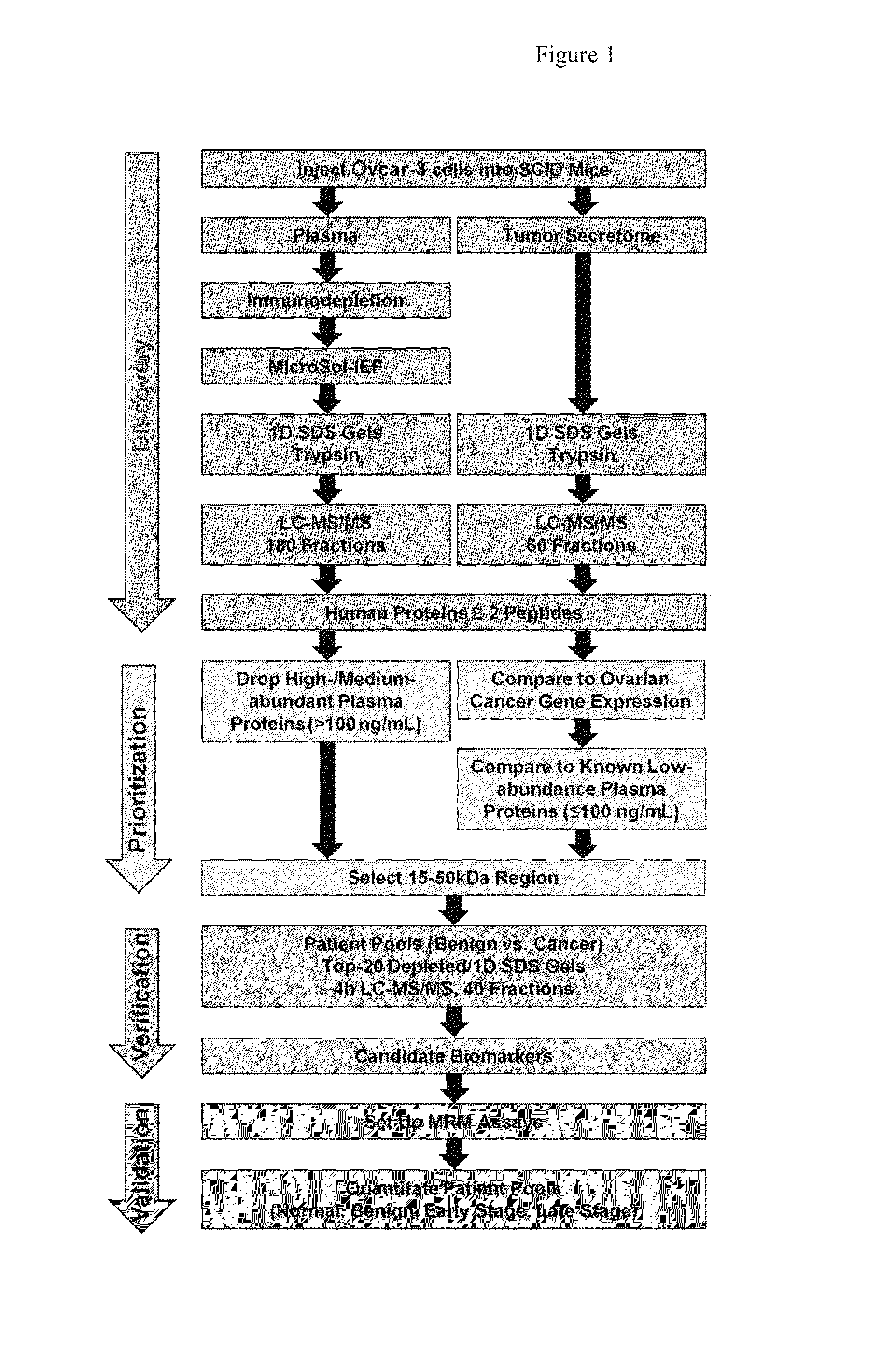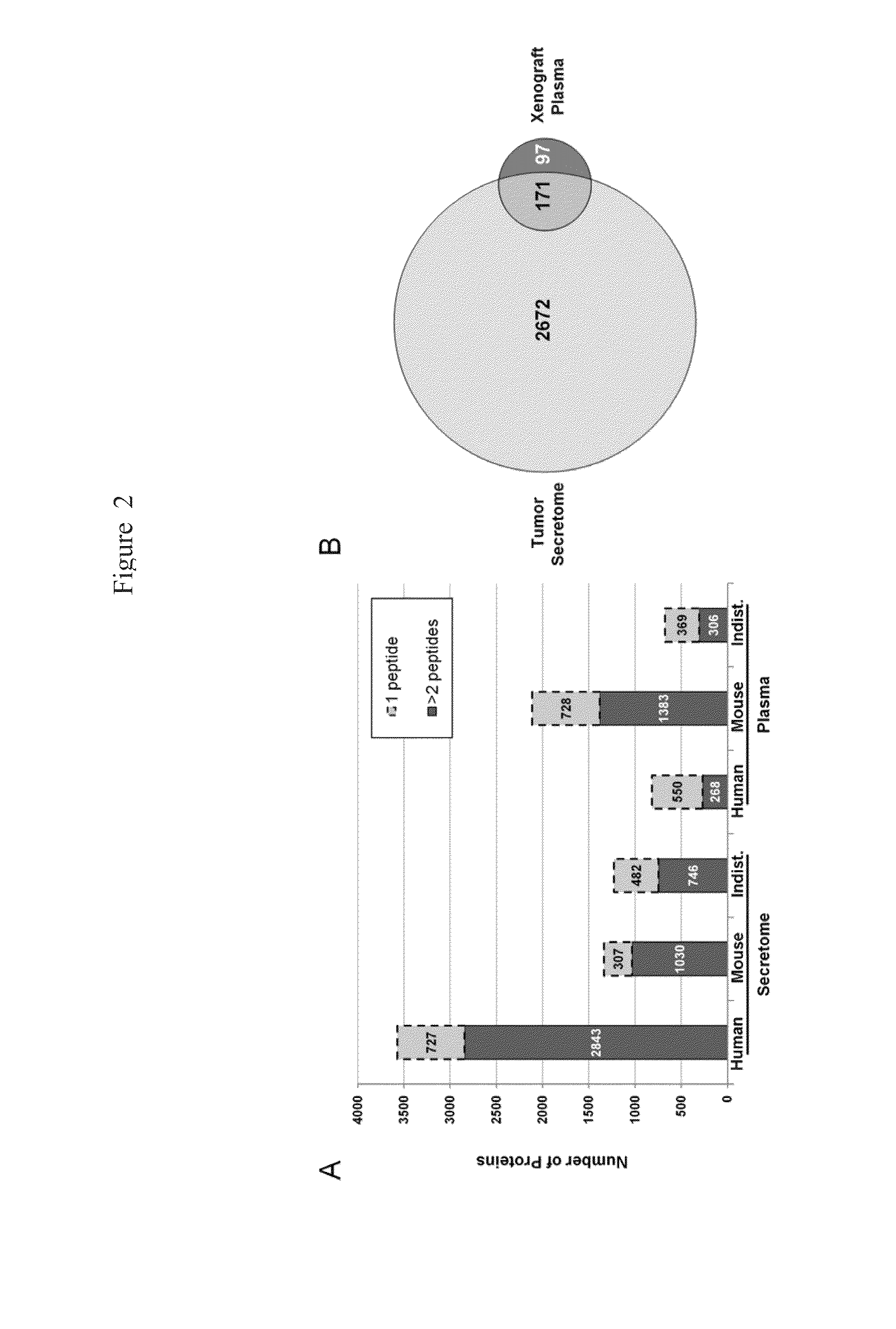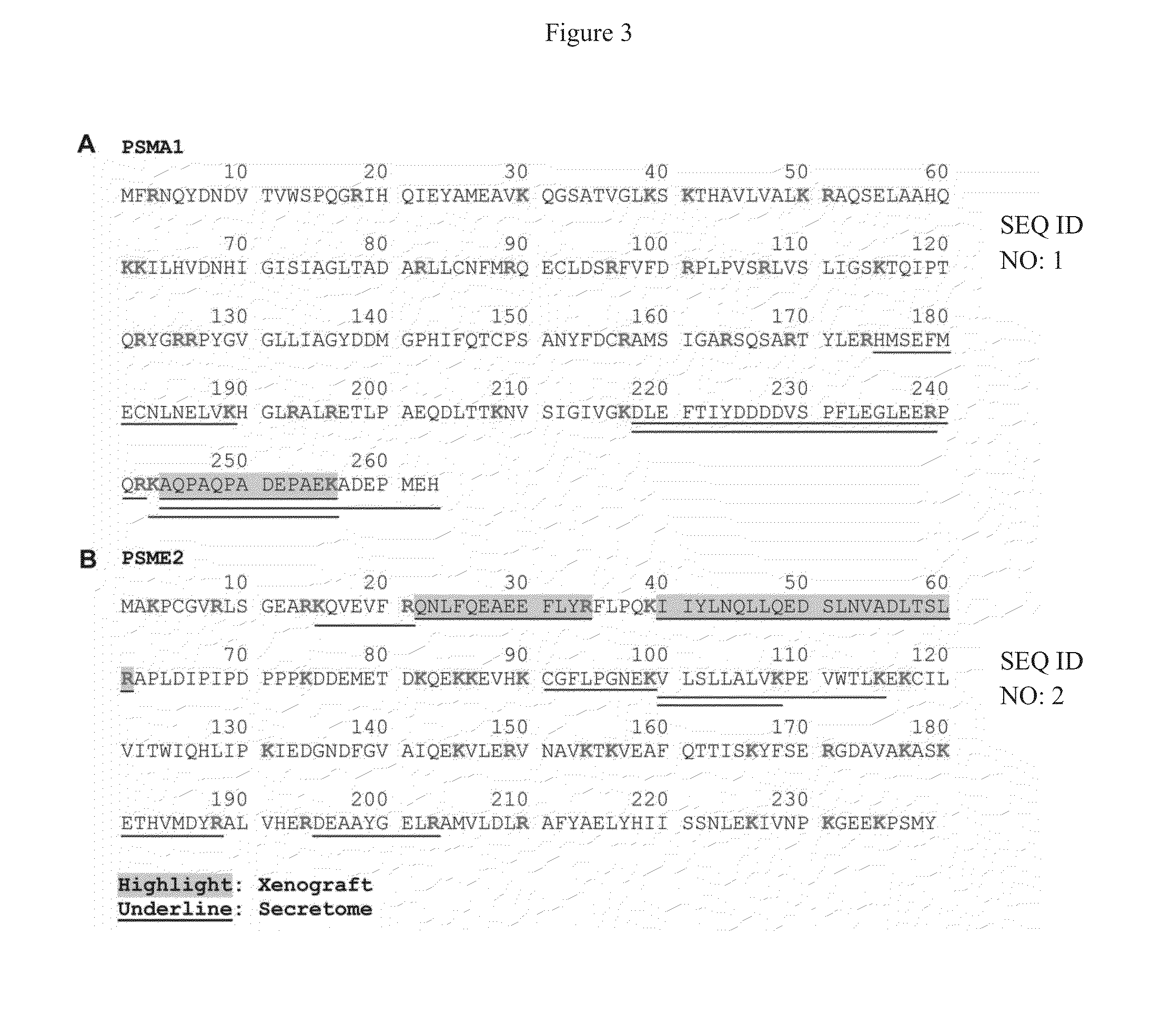Methods and Compositions for Diagnosis of Ovarian Cancer
a technology for ovarian cancer and compositions, applied in the field of methods and compositions for diagnosis of ovarian cancer, can solve the problems of difficult to identify cancer-specific changes in the context of this great complexity, and difficult to discover novel blood biomarkers for cancers
- Summary
- Abstract
- Description
- Claims
- Application Information
AI Technical Summary
Benefits of technology
Problems solved by technology
Method used
Image
Examples
example 1
Materials and Methods
[0151]Reagents. Molecular-biology-grade ethanol (200 proof); LC-MS-grade formic acid; sodium phosphate monobasic; N,N-dimethylacrylamide (DMA), ammonium bicarbonate; and iodoacetamide were purchased from Sigma-Aldrich (St. Louis, Mo.). Sodium dodecyl sulfate (SDS), 2-mercaptoethanol, and Tris were purchased from Bio-Rad (Hercules, Calif.). ZOOM focusing buffers and thiourea were obtained from Invitrogen (Carlsbad, Calif.). PlusOne reagents dithiothreitol (DTT), 3-[(3-cholamidopropyl)dimethylammonio]-1-propanesulfonate (CHAPS), and urea were purchased from GE Healthcare (Piscataway, N.J.). HPLC-grade acetonitrile was purchased from Thomas Scientific (Swedesboro, N.J.). Tris(2-carboxyethyl)phosphine (TCEP) was obtained from Pierce (Rockford, Ill.), and sequencing-grade modified trypsin was purchased from Promega (Madison, Wis.).
[0152]Cell culture. The human EOC cell line OVCAR-3 was obtained from the American Type Culture Collection (ATCC, Manassas, Va.). The cell...
example 2
Xenograft Mouse Model
[0168]The primary experimental systems where migration into the blood is assured are mouse models. One of these approaches is to identity quantitative differences in plasma or serum of genetically engineered mice bearing murine ovarian tumors compared with appropriate controls.17 Importantly, an underutilized alternative is the xenograft mouse EOC model, where in-depth proteome analysis can unambiguously identify human proteins shed by the tumor into the murine blood based upon species differences in peptide sequences found in serum or plasma.
[0169]We recently demonstrated that an in-depth 4D analysis of serum from SCID mice bearing ovarian tumors formed by an endometrial ovarian cancer cell line could detect more than a hundred human proteins that were identified by two or more peptides per protein.18 Furthermore, pilot validation of selected candidate biomarkers demonstrated that many of these proteins could be detected in human serum using multiple reaction m...
example 3
Discovery, Verification, and Validation of EOC Biomarkers Using a Xenograft EOC Mouse Model
[0172]The strategies used to compare the merits of analyzing a xenograft mouse plasma proteome and / or the corresponding tumor secretome to discover novel ovarian cancer biomarkers, as well as downstream verification and initial validation, are outlined in FIG. 1. In the discovery phase, OVCAR-3, an established serous cell line, was grown in SCID mice. Tumors were excised, briefly cultured in serum-free media, and supernatants were divided into 60 fractions and analyzed using GeLC-MS / MS. Due to its greater complexity, the xenograft mouse plasma was subjected to more extensive fractionation (180 fractions) using a 4D plasma proteome separation method developed in our laboratory.22 Human proteins from the xenograft plasma and tumor secretome were prioritized, as described below, and the 15-50 kDa region of the gel was selected for proof-of-principle verification and initial validation studies bec...
PUM
| Property | Measurement | Unit |
|---|---|---|
| pH | aaaaa | aaaaa |
| particle size | aaaaa | aaaaa |
| particle size | aaaaa | aaaaa |
Abstract
Description
Claims
Application Information
 Login to View More
Login to View More - Generate Ideas
- Intellectual Property
- Life Sciences
- Materials
- Tech Scout
- Unparalleled Data Quality
- Higher Quality Content
- 60% Fewer Hallucinations
Browse by: Latest US Patents, China's latest patents, Technical Efficacy Thesaurus, Application Domain, Technology Topic, Popular Technical Reports.
© 2025 PatSnap. All rights reserved.Legal|Privacy policy|Modern Slavery Act Transparency Statement|Sitemap|About US| Contact US: help@patsnap.com



